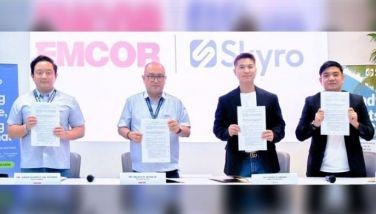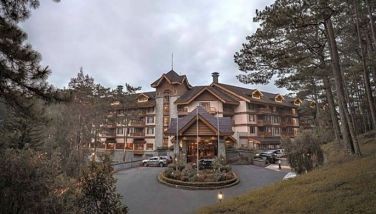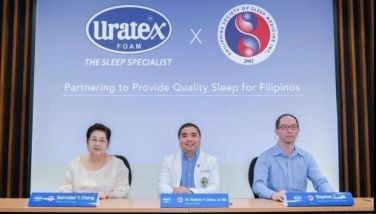Putting people in charge; Poetic justice in CCP appointment

I am one of those disillusioned by people power, not because I do not believe in it, but because it has been wrongly interpreted and therefore wrongly used in the Philippines. I had to discover community radio to articulate what is wrong with it or at least the version that we have developed. The way I see it “people power” in our country is often organized by vested interests and used as a political tool.
Community radio also empowers people but it works differently from massing at EDSA. It is a slow process at knowing oneself and life in one’s immediate surroundings through expression.
* * *
“Through community radio, people have begun to ‘take charge’ of their own lives, of their communities. Through radio, they find themselves participating at the local level in the macro politics of the national level. Hence the inspiration for the sub-title of this book, ‘putting people in charge,’ wrote Carlos A. Arnaldo in his introduction to the book “Community Radio in Asia: Putting people in charge”. It was launched at the UP Los Banos last Thursday. Putting people in charge sums up what community radio is all about.
It was significant for it is here in Asia where “a third of the world’s land mass, half the world’s population and more than a fourth of the world’s poor live.”
Com radio offers not only a viable solution to problems of underdevelopment but it has the potential to generate opportunities.
“After all community radio is development” adds Arnaldo. The puzzle is why it has not been given enough attention by policy makers.
* * *
The principal author of the book is Louie N. Tabing. I felt better when he said that it is not so strange that I have not heard about community radio.
“Community radio is unknown in the Philippines except in the places where we happen to set them up under the UNESCO project Tambuli (1992-2001). “We have yet to introduce community radio to academe, practitioners, policy makers and to the Filipino people at large who are all used to the dominant commercial system,” Tabing said.
He told me “community radios are low power FM stations run and operated by the people themselves for development, education and empowerment.” It usually takes 11-15 people from sector leaders — farmers, fishermen, educators, religious, small businessmen, women, youth, senior citizens, indigenous peoples and the like to manage com radio.
About 10 -20 program makers are trained to write scripts, talk on the air, conduct interviews, prepare short spots and other programs. “The participants are regular people — tindera, teacher, pulis, farmer, fisherman, municipal worker, church worker, tricycle driver, senior citizen, etc. Technicians are also given basic training.
“Tambuli spends more on organizing and training than on equipment,” Tabing said.
Setting up a com radio he said would be about P150,000 to P500,000.
The basic equipment are: a 20-100 watt FM transmitter (good for a town or several towns depending on the terrain), tape recorders, audio mixer, CD player, microphones, and amplifier. The equipment is set up in a room fitted with local acoustical materials such as egg trays, curtains, cartoons, and other materials.
The thrust of com radio is very local. “News and features are “whose sow farrowed and for how much the piglets are being sold, seedlings or rambutan are available at some farmer’s nursery, the old principal of the elementary is ill, a buyer of sampaloc is coming to town, health clinic will be held by the municipal doctor in the remote barangay, a new ordinance penalizing owners of loose animals, lost and found items, remedial lessons on the air on music, history or science for school children, a singing contest, a radio concert by the church choir, the irrigation project being started,” Tabing said. These are the stuff of real life in the community. Tabing is convinced that com radio is an alternative to the existing commercial system dictated and motivated by the PPPPs - profit, propaganda, power, and privilege that are seldom relevant to the community.
The main obstacle for com radio to flourish is licensing. “There are at least two set of documents one has to have in order to operate a radio station (commercial, educational, public or community) — the franchise from Congress and the permits/licenses from the National Telecommunications Commission. Educational low power station are exempted from getting a franchise, hence state universities are able to secure the license. Other operators affiliate with some commercial franchises. Some run their station without the benefit of a franchise.”
He said that a law should be passed by Congress just like they have in other countries (Canada, Great Britain, Australia, Netherlands, India) where there are 3-5 classifications of broadcast operation - commercial, educational, public affairs or government, religious and community.
Sadly, he adds “Sa atin hindi kilala ang community radio.” Community stations (low power less than 1 Kilowatt, operated by cooperatives or a collective for development, people empowerment and education, should be exempted from a congressional franchise.
How does com radio in the region compare around the world? “Asia has the least number of community radio. The leaders in the community radio movement are Latin America (tens of thousands of com radios), Europe, Australia, Canada and Africa.”
For the moment, the Philippines leads in Asia. But India is poised to put up thousands of community radios after the parliament allowed the licensing of private radio stations and with other enactments promoting com radio.
Com radio and its possibilities to empower people will advance the cause of greater local autonomy.
* * *
Breaking News. Just as I was closing this column I received word of my appointment as member of the board of the Cultural Center of the Philippines. This is a pleasant, if ironic surprise to me.
The Cultural Center of the Philippines was central to the development of Imelda’s persona in her rise from rags to riches. She saw the arts as a vehicle to fulfill her craving for attention and recognition as a cultured, refined lady who belonged to the aristocracy. The Cultural Center is testament to her obsession to be rich, powerful and world-famous. There will be a lot of work in reviewing policies that may have hewed closely to this personal ambition.
There is poetic justice to become a member of the board of her most ambitious project. Moreover, I am vindicated after many years of exile and suffering for having written The Untold Story of Imelda Marcos.
- Latest
- Trending























